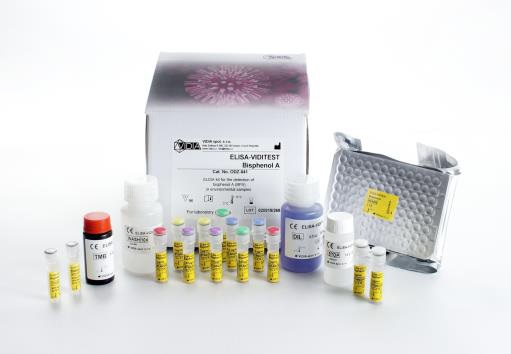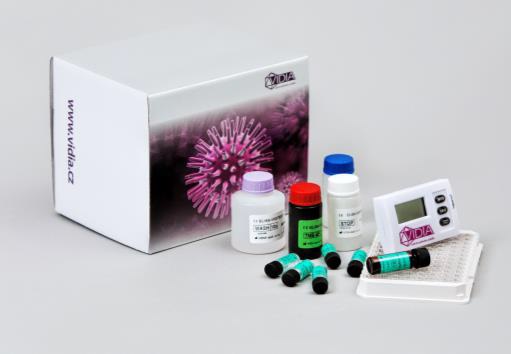Environmental Monitoring
ELISA VIDITEST Bisphenol A
ELISA-VIDITEST BISPHENOL A is based on the competition between the BPA presented in the sample and the BPA immobilized at the surface of the microwells. The analyte competes for binding sites at the anti-BPA polyclonal chicken antibody. The antibodies that remain available to bind to the surface are detected with anti-chicken antibody pe-roxidase conjugate. BPA concentration in the sample is inversely proportional to the color developed by the enzyme catalyzed reaction of the conjugate with a chromogenic substrate ITMBI, ie. low optical density reflects the high concentrations of BPA. The sample extraction required. Its recommended to use the extraction method commonly used in the other methods of BPA detection (HPLC or GC).

Used for measurement of BPA in water and soil

BPA is a well known lipophilic toxic compound as well as an endocrine disruptor that can mimic the organism's own hormones and may causes negative health effects. BPAis primarily used to make plastics such as polycarbonate plastic, which is used in a variety of packaging applications. BPA can be released from the material.
The evidence of the negative effect on reproduction by BPA comes from animal expeiments. BPA caused changes in organ morphology that lead to the semi- or total infertility. BPA contamination of the environment probably contributes to the increased prevalence of infertility in humans.
ELISA VIDITEST Microcystin LR

Used for
- Detection of Microcystin in Waters
- Detection in Drinking Water
- Detection in Water of recreation areas
Key Features
- Direct competitive ELISA
- Quantitative detection according to standard curve
- Calibrators in work concentration
- Sensitivity of the test 0,05 μg/L
Instructions
- ELISA-VIDITEST Microcystin-LR allows detection of MC-LR in water.
- Microcystin-LR is extremely toxic compound produced by cyanobacteria (Microcystis, Oscilatoria, Nostoc and Anabaena).
- Microcystin-LR has hepatotoxic and neurotoxic effect, possibly potential carcinogenic effect.It is also the promotor of local alergic reaction and gastrointestinal problems.
- It causes allergic and skin reaction. This may weak the human immunity and leads to development of so-called summer virus sickness. Therefore it is appropriate to perform monitoring of microcystin-LR presence in water of recreation areas on regular basis.
- The contamination of drinking water or water of recreational areas with Microcystin-LR can cause several health problems to exposed human and animals. The provisional guideline value by the World Health Organisation is 1 μg/L for drinking water.
- The principle of Test is the competition of Microcystin from Calibrator / Sample with Microcystin – HRP for antigen binding site of antibody immobilized in the well of microtitration plate. Intensity of the colour reaction is indirect proportionate to sample concentration.
- Sample preparation for evaluation of examinated water is fast and uncomplicated.
- According to the study of functional eligibility there is 95% agreement (# 20 samples) with other commonly used testing ELISA kit.
